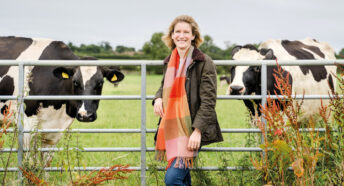Helping wildlife through the winter
There might not be so many animals out and about to spot at this time of year but with little effort, you can make it an easier season for them. Juliette Joannès shares some tips.
1. Leave the leaves
An easy way to look after wildlife in winter is actually to do less with your garden than you normally might.
Avoid pruning berry or fruit-bearing bushes or trees in your garden or on your balcony, as these provide indispensable food for birds over the next few months.
Allow leaves, twigs and sticks to pile up under hedges or in borders. This can provide a cosy home for hedgehogs and dormice to hibernate. The leaves will also shelter insects – which will become food for those insects as the leaves decompose. These insects will in turn be food for birds who will feast by picking at the leaves. On a balcony, do leave a corner to gather any leaves or dust, to provide insects with a shelter.

If you do need to move piles of leaves or wood, especially to light a bonfire, make sure you check for small mammals first.
2. Finding food
The winter months are especially tough for animals that don’t hibernate, such as birds, squirrels, badgers and foxes. They have to keep their body temperature up by eating sufficient food, but it is scarce at this time of year. You can be their lifeline by making or buying them food.

Fat balls, sunflower seeds and (unsalted) peanuts are appreciated by many birds. You can put these up in a tree, or in a standalone birdfeeder if you want to stop the squirrels from getting there first. Birdfeeders make great gifts for birdwatchers or general wildlife lovers. If filled with nutritious food, you can be sure they will be used and appreciated!
Squirrels and pigeons may not be welcome guests, especially if you live in a flat and have a balcony feeder. Find foods that they don’t like and feeders that they can’t access.
3. Don’t forget the water
It’s also important to supply wildlife with water, especially in freezing temperatures. A plant saucer with a few differently-sized stones in it will allow a variety of birds to bathe. If you place the saucer at ground level, many other animals will also be able to drink from it. Make sure you break the ice if it freezes.

If you have a pond, and the surface is frozen, you may want to melt or break some of the ice to allow animals to drink from it. Melt the ice by placing a hot saucepan on the surface, or gently poking a few holes. Avoid breaking the ice with any force, or by pouring boiling water in, as this could harm any fish, frogs or newts living inside.
Ensure you clean birdfeeders and saucers before refilling them, to avoid spreading diseases.
4. Give them shelter
If you have a bit more time, you can provide wildlife with a more substantial shelter.
Making bird boxes can be a fun project over winter’s dark weekends and breaks. These can then be gifted as lovely handmade presents. And you can always cheat and buy one if you’re short of time – the birds won’t mind!

Birds will take shelter in boxes on colder nights, and if they get familiar with the box now, they may choose to nest in the spring. Depending on what bird the box is made for, you can put these up in trees, under your roof, or against a wall, making their use possible for people in flats.
As with bird feeders, it’s good practice to wash nest boxes every so often – but only when you’re certain that you don’t have any tenants, as you don’t want to disturb them!









